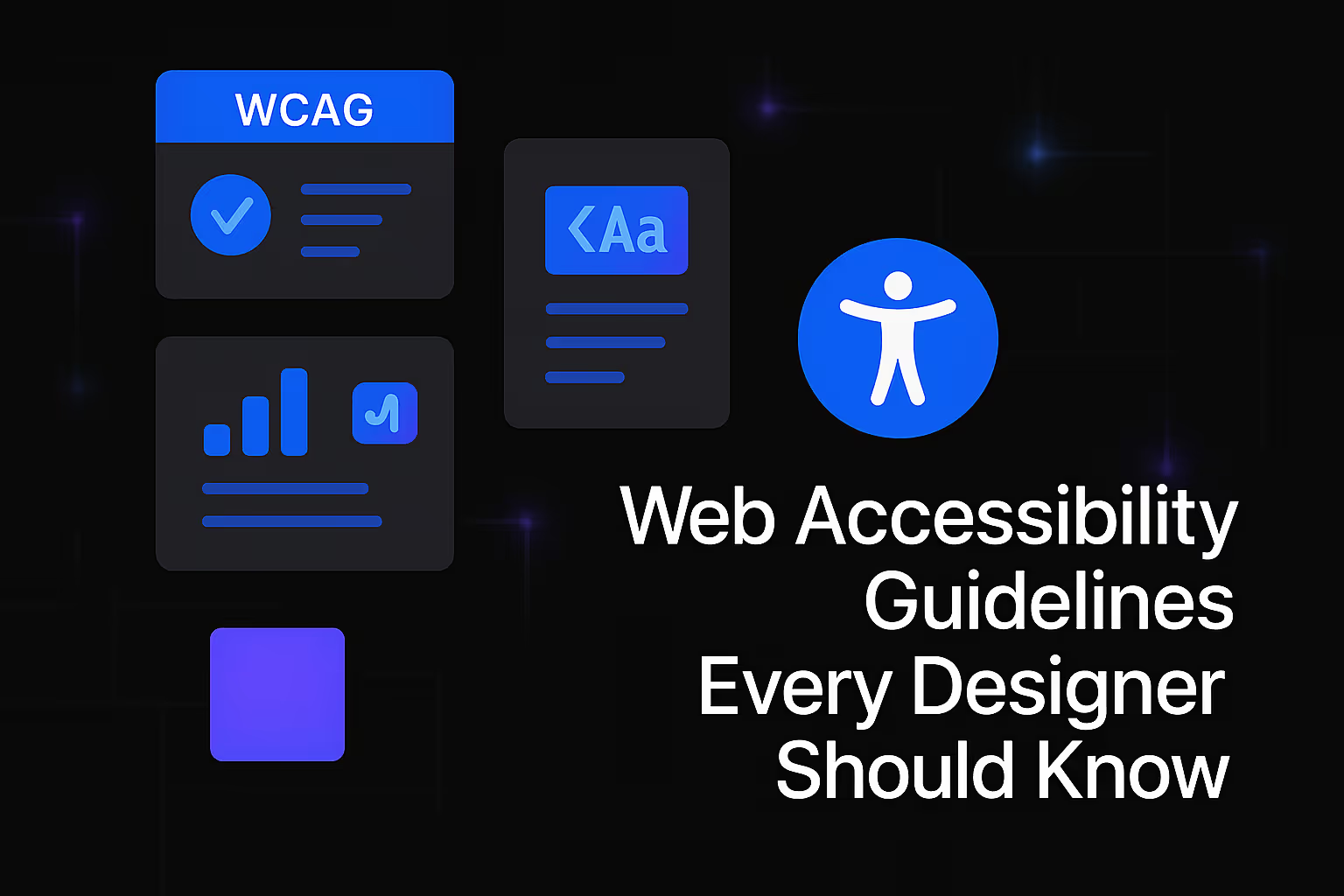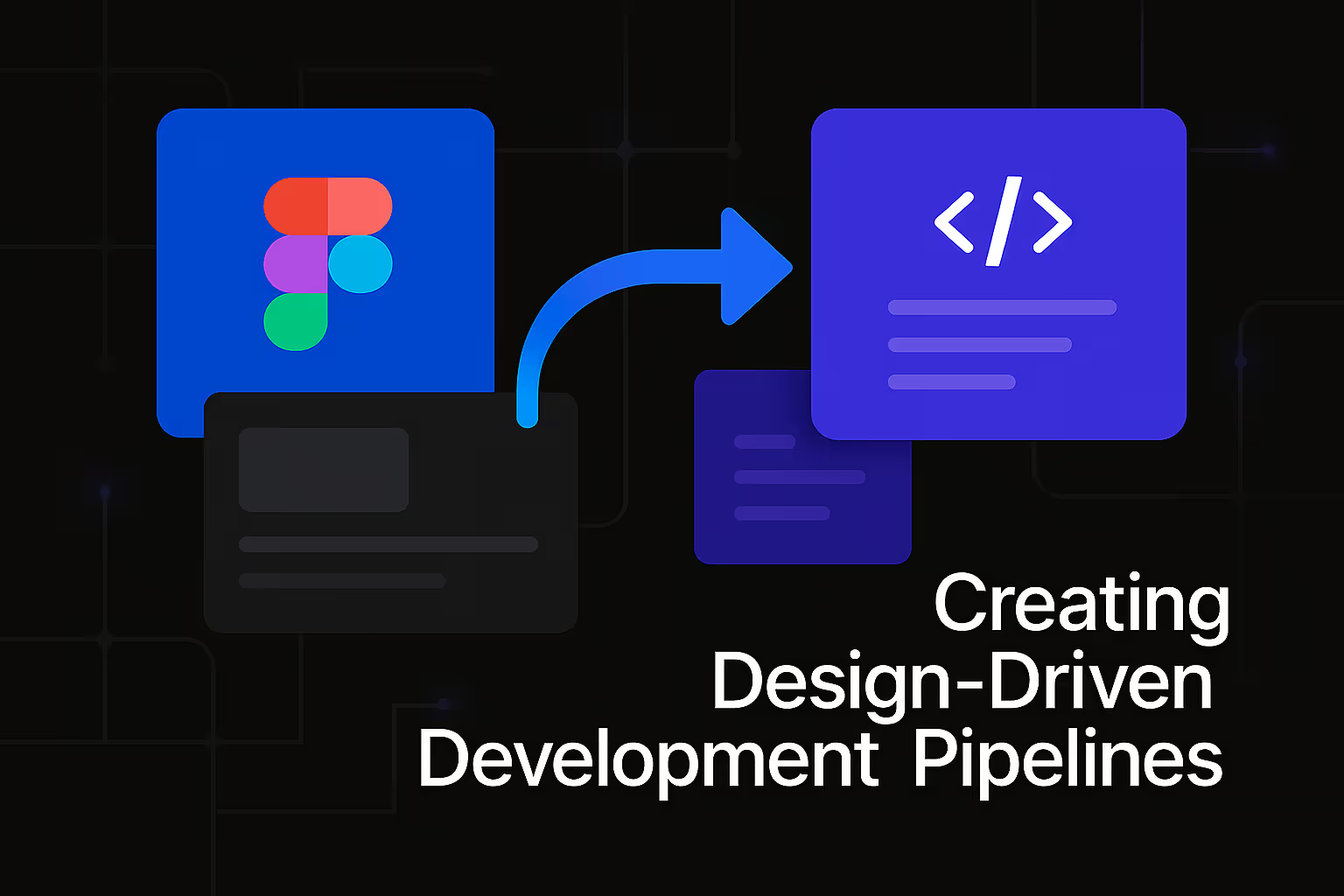Why Design Systems are Crucial for Scalability

In the rapidly evolving landscape of digital product development, organizations constantly strive for efficiency, consistency, and the ability to grow without breaking. As digital footprints expand and user expectations rise, the inherent complexity of managing diverse platforms, numerous products, and large teams becomes a significant challenge. This is where design systems emerge not just as a beneficial tool, but as an absolutely indispensable foundation for achieving true scalability. A design system is more than just a style guide or a component library; it is a comprehensive framework encompassing principles, guidelines, reusable UI components, and best practices that ensure a unified design and development experience across an entire organization’s digital ecosystem. Without such a cohesive structure, the very act of scaling can lead to an exponential increase in technical debt, inconsistent user experiences, and a significant drain on resources. The imperative for businesses to future-proof their digital operations and maintain agility in a competitive market directly points to the critical role of robust design systems in fostering sustainable growth.
The Foundational Role of Consistency and Efficiency
The core tenets of any successful scaling strategy revolve around maintaining consistency while simultaneously boosting efficiency. Design systems directly address these dual needs by providing a standardized approach to product creation. They lay down the groundwork, ensuring that as an organization expands its digital offerings or its team size, the fundamental elements of its user interface and experience remain harmonious and streamlined.
Ensuring UI/UX Consistency Across Products
One of the most immediate and tangible benefits of a design system is its profound impact on UI/UX consistency. Imagine a growing company with multiple product teams, each working on different applications or features. Without a central repository of design components and guidelines, each team might independently create buttons, forms, navigation elements, and even color palettes. This leads to subtle, or sometimes glaring, inconsistencies across products. Users interacting with different parts of a company’s digital suite might encounter varied visual styles, inconsistent interaction patterns, and a fragmented overall experience. This fragmentation erodes brand recognition and can significantly diminish user trust, making it harder for users to navigate and adopt new features or products.
A robust design system acts as the single source of truth for all visual and interactive elements. It provides a shared language and a standardized set of reusable components, from atomic elements like typography and color tokens to more complex compositions like navigation bars and data tables. When every designer and developer across the organization draws from this unified system, discrepancies are virtually eliminated. This not only ensures a seamless and intuitive user experience across all digital products but also reinforces brand consistency. Users recognize the brand’s unique identity, regardless of the specific application they are using, fostering a sense of familiarity and reliability. This cohesive experience is not merely aesthetic; it is fundamental to building lasting user loyalty and trust as a business expands its reach.
Accelerating Development Cycles and Reducing Redundancy
Beyond consistency, efficiency is a cornerstone of scalability, and design systems are powerful accelerators in the development lifecycle. In the absence of a shared system, development teams often find themselves in a repetitive loop, painstakingly recreating components that already exist in slightly different forms elsewhere within the organization. This redundant work is not only a colossal waste of valuable engineering resources but also significantly slows down the pace of innovation. Every hour spent rebuilding a common UI element is an hour not spent on developing new features, optimizing performance, or addressing critical user needs.
A well-implemented design system, complete with a comprehensive component library, fundamentally transforms this dynamic. Developers no longer need to start from scratch for common interface elements. Instead, they can simply pull pre-built, tested, and documented components directly from the system. This drastically boosts development speed and efficiency, allowing teams to allocate their time and expertise to more complex and innovative challenges. Furthermore, when components are centrally managed and updated, improvements or bug fixes can be propagated across all instances of that component with minimal effort. This significantly reduces the overhead associated with maintaining multiple versions of similar code, streamlining the entire development process. The ability to rapidly assemble new features and products from existing, validated building blocks is a competitive advantage that directly supports an organization's ambitions for rapid product development.
Mitigating Technical Debt and Enhancing Maintainability
As digital products grow in size and complexity, so does the accumulation of technical debt. This hidden cost can cripple an organization's ability to innovate and scale effectively over time. Design systems offer a powerful antidote, promoting cleaner codebases and ensuring that products remain adaptable and maintainable in the long run.
Streamlining Codebase Management
Without standardized practices, different teams or even individual developers might employ varying coding conventions, architectural patterns, and naming conventions for similar components. This fragmentation leads to a sprawling, inconsistent codebase that becomes increasingly difficult to navigate, understand, and manage. Debugging becomes a nightmare, as the root cause of an issue might be hidden within a labyrinth of inconsistent code. Onboarding new developers becomes a lengthy and arduous process, as they struggle to grasp the disparate approaches used across different parts of the application. This proliferation of unstandardized code directly contributes to technical debt, a burden that can significantly hinder future development efforts and inflate maintenance costs.
A design system actively combats this by enforcing a unified set of coding standards and patterns for UI components. Each component within the system is built with a consistent structure, clear documentation, and adherence to established best practices. This leads to a cleaner, more standardized codebase that is inherently easier to read, understand, and modify. When an issue arises, developers can quickly pinpoint the relevant component and apply fixes, knowing that the change will propagate predictably across all instances. This streamlined codebase management translates into significant long-term cost savings by reducing the time spent on debugging, refactoring, and general maintenance. The initial investment in establishing a robust design system pays dividends by creating a more resilient and manageable technical foundation for sustained growth.
Adapting to Evolving Technologies and User Needs
The digital landscape is in a state of perpetual flux. New technologies emerge constantly, user expectations shift, and design trends evolve. Products built on disparate, non-standardized foundations find it incredibly challenging to adapt to these changes without undergoing massive, costly overhauls. A desire to update the visual style, incorporate a new accessibility standard, or switch to a different frontend framework can become a monumental undertaking, akin to rebuilding a house from the ground up. This inflexibility stifles innovation and can leave organizations lagging behind competitors who are more agile.
A well-structured design system, by its very nature, promotes adaptability. Because the system comprises modular, independent components, changes can often be implemented at the component level and then cascaded throughout all instances. For example, if a company decides to update its brand colors or improve the accessibility of its interactive elements, these changes can be made within the design system’s core design tokens and components. The updates then ripple through all applications that consume the system, requiring significantly less manual effort. This modularity makes a design system an invaluable tool for future-proofing digital products. It allows organizations to embrace new technologies, respond to evolving user needs, and integrate new functionalities with far greater ease and speed. The ability to adapt without disruption is paramount for any entity seeking to scale its digital presence effectively and maintain relevance in a dynamic market.
Fostering Collaboration and Empowering Teams
Scalability is not just about technology; it's profoundly about people and how they work together. As teams grow and become more distributed, communication breakdowns and misalignments can become significant impediments. Design systems act as powerful facilitators of collaboration, creating a shared understanding and empowering every member of the product team.
Bridging the Gap Between Design and Development
Historically, a common friction point in product development has been the communication gap between designers and developers. Designers often hand off static mockups or prototypes, which developers then interpret and translate into code. This process is prone to misinterpretations, leading to designs that are not accurately implemented or functionalities that deviate from the original vision. Iteration cycles can be slow as feedback loops involve lengthy explanations and repeated adjustments. This disconnect not only frustrates both parties but also introduces inefficiencies and errors into the development pipeline.
A design system fundamentally transforms this relationship by creating a shared language and a common operational framework. Both designers and developers refer to the same set of documented components, guidelines, and principles. Designers work with pre-defined components that directly map to coded components, reducing ambiguity. Developers, in turn, have clear specifications and ready-to-use code snippets, ensuring that what they build is a faithful representation of the design intent. This shared understanding fosters seamless collaboration, allowing teams to work in parallel more effectively. The system itself becomes a living contract between design and development, streamlining the hand-off process and enabling faster, more accurate implementation. This improved synergy is critical for scaling product delivery without compromising quality.
Onboarding and Empowering New Team Members
As an organization scales, so does the need to expand its workforce. Onboarding new designers and developers can be a time-consuming and resource-intensive process. Each new hire needs to learn the company’s specific design conventions, coding standards, and existing componentry. Without a centralized, well-documented system, this knowledge transfer is often ad-hoc, inconsistent, and reliant on individual mentors, which can be inefficient and lead to varying levels of understanding among new hires.
A comprehensive design system significantly simplifies and accelerates the onboarding process. New designers immediately gain access to the established visual language, interaction patterns, and brand guidelines, allowing them to start contributing to design work with confidence and consistency from day one. Similarly, new developers can quickly understand the existing codebase by referencing the standardized component library and its documentation. They can leverage pre-built components, ensuring that their contributions adhere to established coding standards without extensive prior knowledge of the entire codebase. This not only reduces the ramp-up time for new hires but also empowers them to be productive faster. Furthermore, for distributed teams, a design system provides a critical shared reference point, ensuring that geographically dispersed members can maintain consistency and cohesion in their work, regardless of their location. This systematic approach to knowledge sharing and team enablement is a cornerstone of scalable growth.
The Strategic Impact on Business Growth and Innovation
Ultimately, the technical and operational benefits of design systems translate directly into strategic advantages for the business. They enable organizations to compete more effectively, respond to market demands, and drive innovation that fuels sustainable growth.
Elevating User Experience and Brand Perception
In today's competitive digital landscape, user experience is no longer a luxury but a core differentiator. Users expect seamless, intuitive, and visually appealing interactions across all touchpoints. Inconsistencies, bugs, or a disjointed brand presentation can quickly lead to frustration, abandonment, and a negative perception of the business. Conversely, a consistently excellent user experience fosters engagement, builds loyalty, and strengthens the brand’s reputation.
A design system serves as the guardian of this experience. By ensuring UI/UX consistency and providing a foundation for high-quality, accessible interfaces, it directly elevates the overall user experience. When every product and feature adheres to a unified aesthetic and functional standard, users perceive the brand as professional, reliable, and user-centric. This enhanced perception not only retains existing customers but also attracts new ones, leading to positive word-of-mouth and increased market share. The ability to consistently deliver a polished and predictable experience across an expanding portfolio of digital products is a powerful driver of brand perception and, by extension, business growth. It ensures that as a company scales its operations, it simultaneously scales its commitment to user satisfaction.
Enabling Rapid Iteration and Market Responsiveness
The pace of change in the digital world demands agility. Businesses that can quickly adapt to market shifts, launch new features, or pivot their strategies gain a significant competitive edge. Traditional development methodologies, burdened by technical debt and inconsistent practices, struggle to keep up with this demand for rapid iteration. Every new initiative often requires significant overhead to align design and development, leading to slow time-to-market.
A design system fundamentally changes this dynamic. By providing a repository of reusable, pre-approved components and clear guidelines, it dramatically reduces the time required to design, develop, and deploy new features or entire products. Teams can assemble new interfaces with unprecedented speed, much like building with high-quality, standardized blocks. This agility enables organizations to respond quickly to market changes, test new ideas, and iterate on existing products with far less friction. Whether it’s launching a new product line, adapting to a sudden shift in customer behavior, or experimenting with a novel user interaction, the design system provides the underlying framework that allows for rapid innovation. This capability is vital for any business aiming for long-term scalability and sustained competitive advantage in a fast-moving digital economy.
Implementing a Design System for Scalable Success
While the benefits are clear, successfully implementing and maintaining a design system requires strategic planning and ongoing commitment. It’s not a one-time project but a continuous investment in the organization's digital infrastructure.
Overcoming Initial Challenges
The journey to establishing a robust design system is not without its hurdles. The initial phase often requires a significant upfront investment of time, resources, and effort. This includes conducting thorough audits of existing products, defining core principles, selecting appropriate tooling, and developing the initial set of components and documentation. Organizations may encounter resistance from teams accustomed to their individual workflows or concerns about the immediate return on investment. It requires convincing stakeholders of the long-term strategic value over immediate, tactical gains. Establishing clear governance, roles, and responsibilities for the design system team is also crucial to ensure its successful adoption and evolution. However, viewing these initial challenges as a strategic investment rather than a mere cost is vital. The benefits of improved efficiency, reduced technical debt, and accelerated innovation far outweigh the initial outlay, making it a crucial strategic decision for any company serious about its future digital endeavors.
Continuous Evolution and Governance
A design system is not a static artifact; it is a living product that must evolve alongside the organization and its digital offerings. Just as products themselves require continuous updates and improvements, so too does the underlying design system. Neglecting its maintenance can lead to it becoming outdated, irrelevant, and ultimately, a source of new technical debt rather than a solution. Effective governance is paramount. This involves establishing clear processes for how new components are added, existing ones are updated or deprecated, and how feedback from various teams is incorporated. It requires a dedicated team or individuals responsible for maintaining the system, ensuring its quality, and advocating for its adoption across the organization. Regular communication, training, and ongoing support are essential to ensure that all teams understand and leverage the system effectively. As the organization scales, the design system must scale with it, adapting to new platforms, technologies, and business needs. This continuous evolution and dedicated oversight ensure that the design system remains a powerful asset, enabling, rather than hindering, sustained digital growth and innovation.
In conclusion, design systems are far more than a trend in modern digital product development; they are an essential strategic asset for any organization aspiring to achieve and sustain scalability. By fostering consistency, accelerating development speed, mitigating technical debt, enhancing maintainability, improving collaboration, and ultimately elevating the user experience, design systems lay the groundwork for efficient and innovative growth. They transform chaotic, disparate workflows into streamlined, harmonious processes, empowering teams to build better products faster. While their implementation requires commitment and ongoing effort, the long-term benefits in terms of agility, quality, and competitive advantage are undeniable. In an increasingly complex and demanding digital landscape, a robust design system is not merely a choice; it is a fundamental requirement for building a resilient, adaptable, and ultimately successful digital future.
Similar Insights
Stay Updated with Our Insights
Join our newsletter for the latest trends and tips in web development and digital marketing.




